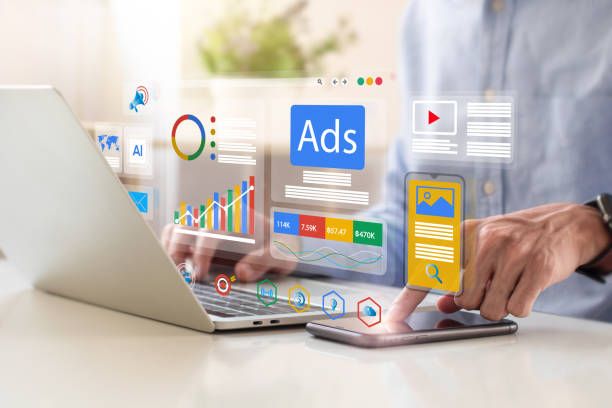Running Google Ads campaigns without optimizing your landing page is like pouring water into a leaky bucket. It drains your budget and limits your potential returns. An optimized landing page not only captures traffic but also converts it.
For businesses aiming to boost conversions, partnering with experts— explore stormedigital.com can be a game-changer. Let us explore five actionable tips to transform your landing page into a high-performing conversion tool.

1. Design for Clarity and Simplicity
A cluttered landing page confuses users and distracts from your core message. Your headline should instantly convey what you offer and why it matters. Avoid jargon or excessive creativity that may dilute the message.
Ensure there is enough white space. This gives your visitors visual relief and helps them focus on the essential parts of the page. Use one prominent call-to-action (CTA). Multiple CTAs can create decision fatigue and lower conversions.
Limit distractions. Remove unnecessary links and navigation menus. A landing page is not a homepage—it should have a singular goal. Mobile responsiveness is crucial. Test your design on various devices to guarantee a consistent experience.
2. Align with Ad Copy and User Intent
Consistency between your ad copy and landing page increases trust and reduces bounce rate. Use the same language and keywords in both. This assures visitors they have landed in the right place.
If your ad promises a discount or free trial, prominently display that information on the page. Match the landing page content with the user’s stage in the buyer journey. Informational intent requires educational content, while transactional intent demands direct offers.
This alignment boosts the Quality Score, thereby improving ad placement and reducing cost-per-click (CPC).
3. Speed Up Your Load Time
Page speed is non-negotiable. A slow-loading page frustrates users and increases bounce rates. Compress images and use lazy loading to optimize media content.
Minimize JavaScript and CSS files. Remove unused scripts to improve load time. Leverage browser caching and a content delivery network (CDN) to serve content faster.
Google recommends a load time of under three seconds. Every second beyond that drastically reduces your conversion potential. Use tools like Google PageSpeed Insights or GTmetrix to monitor performance regularly.
4. Build Trust with Social Proof and Security
Visitors are more likely to convert when they trust your brand. Display testimonials, reviews, and case studies from real customers. Ensure they are current and credible.
Use trust badges from payment providers, SSL certifications, or industry affiliations. Include recognizable client logos or partner brands to enhance legitimacy.
Avoid stock images. Use real team photos or product visuals to humanize your brand. These elements reduce hesitation and establish authority in your niche.
5. Optimize for Local and Performance-Based Targeting
Local intent is powerful, especially for location-based campaigns. Use geo-targeted keywords and highlight your regional presence. Ensure your landing page contains relevant contact details, Google Maps integrations, or region-specific offers.
For advertisers focused on measurable performance, integrate real-time analytics and conversion tracking. Highlight local case studies, testimonials, or campaign success stories.
To leverage tailored PPC strategies, businesses can explore expert PPC services in Gurugram offered by proven industry leaders.

6. A/B Test Continuously
No landing page is perfect from the start. Regular testing is essential. Conduct A/B tests for headlines, CTA buttons, images, and page layout. Use tools like Google Optimize or VWO to compare different versions of your page.
Focus on one variable at a time to identify what improves performance. Use heatmaps to understand how users interact with the page and where they drop off. Let data—not assumptions—drive your design decisions.
7. Use Emotionally Engaging Content
Facts inform, but emotions drive action. Craft copy that speaks directly to your audience’s pain points and desires. Use power words that invoke urgency, excitement, or trust.
Support emotional triggers with visual storytelling—use photos, illustrations, or videos that resonate with your brand message. Keep the tone aligned with your brand personality, whether it is bold, compassionate, or authoritative.
If you want more strategies for emotional design and persuasive content, read the full article.

8. Make Your Form Short and Smart
Lengthy forms reduce completion rates. Ask only for essential information. Use conditional logic to reveal additional fields only when necessary. This keeps the form clean and increases completion rates.
Use multi-step forms if you require more data. Breaking the form into smaller parts makes it feel less overwhelming. Make the CTA button clear and benefit-oriented. Phrases like “Get Your Free Quote” or “Start My Trial” perform better than generic options.
Ensure form validation works smoothly and provides helpful error messages. A frustrating form experience can cost you conversions.
9. Leverage Visual Hierarchy and Scannable Layouts
Most users scan rather than read. Use clear headings, subheadings, bullet points, and contrasting text styles to highlight key points.
Visual hierarchy guides the user’s eye from the most important elements to the least. Ensure your headline, benefits, and CTA are the most prominent.
Use color and contrast wisely to differentiate between sections and guide action. Make CTAs pop using contrasting but on-brand colors. A well-structured layout improves comprehension and drives faster decision-making.
Conclusion
An effective landing page is the backbone of your Google Ads success. From fast loading and compelling copy to trust signals and smart forms, every element plays a role in conversion.
Continue refining, testing, and improving based on data. When you need expert help to design, optimize, or manage high-performing landing pages, contact our team to get started. A well-optimized landing page is not just a destination—it is a powerful conversion engine.